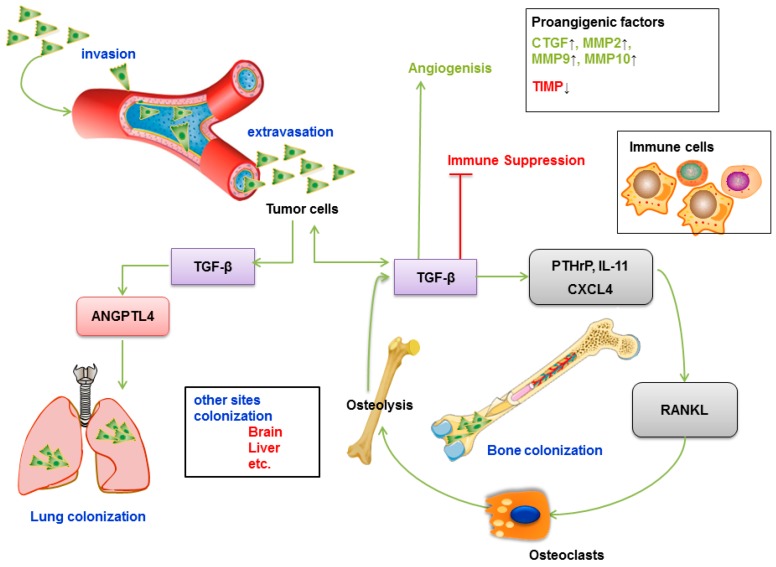Figure 6.
TGF-β mediates metastasis. TGF-β produced by cancer cells can alter the bone microenvironment by inducing the expression of osteolytic factors like PTHrP and IL11. The osteoclast bone resorption via RANKL production by osteoblasts results in more release of TGF-β, which in turn acts on tumor cells thereby creating a positive feedback loop called a “vicious cycle”. Chemokine receptor CXCL4 and angiogenesis inducer connective tissue growth factor (CTGF) are also key modulators induced by TGF-β in this process. Another important factor of this metastatic preference is the Wnt antagonist Dickkopf 1 (DKK1); cells that highly secrete DKK1 tend to metastasize to bone, while low DKK1-secreting tumor cells tend to metastasize to the lung. TGF-β leads to transcriptional upregulation of proangiogenic factors, including CTGF, matrix metalloprotease (MMP)2, MMP-9, and MMP10, or inhibition of TIMP to mediate the formation of new blood vessels. TGF-β inhibits the proliferation of T cells and B cells and inhibits the production of immune factors by B lymphocytes. In addition, TGF-β-induced angiopoietin-like 4 (ANGPTL4) via the SMAD signaling pathway is proangiogenic and can disrupt lung capillary walls and seed pulmonary metastases. Inhibitory signals are indicated with inhibitory red arrows; Stimulatory signals are indicated with green arrows.

